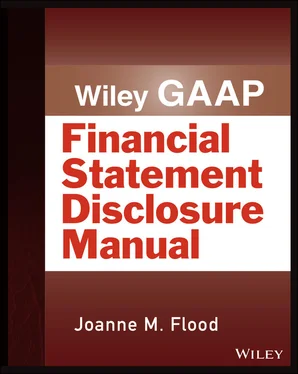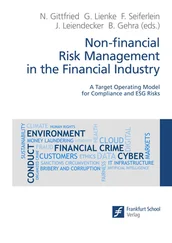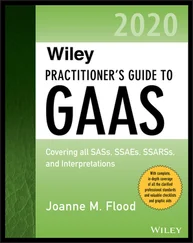Continuing InvolvementAfter disposal an entity may have significant continuing involvement because of a supply agreement, guarantee, equity method involvement, etc. For as long as the discontinued operation is presented separately, the entity must present information about the entity's significant continuing involvement with a discontinued operation after the disposal date. (FASB ASC 205‐20‐50‐4A)
For each discontinued operation in which the entity retains significant continuing involvement after the disposal date, the entity must disclose:
Description of the nature of the activities that give rise to the continuing involvement.
Period of time the involvement is expected to continue.
The amount of any cash flows.
Revenues or expenses in continuing operations after the disposal transaction that were eliminated in consolidated financial statements as intra‐entity transactions
Where an entity retains an equity method investment after disposal:The pretax income of the investee.The ownership interest in the discontinued operation before and after disposal.The ownership interest in the investee after the disposal transaction.Share of the income or loss of the investee in the period after the disposal and where on the income statement that is reported.(FASB ASC 205‐20‐50‐4B)
Disclosures Required for a Discontinued Operation Comprising a Component or Group of Components of an EntityFor discontinued operations, to the extent not presented on the face of the financial statements as part of discontinued operations, the entity must disclose:
Pretax profit or loss.
Major classes of line items making up the pretax profit or loss.
For the periods in which the results of discontinued operations are presented in the income statement either:the total operating and investing cash flows of the discontinued operation, orthe depreciation, amortization, capital expenditures, and significant operating and investing noncash items.
The pretax profit or loss attributable to the parent if the discontinued operation includes a noncontrolling interest.
Carrying amounts of major classes of assets and liabilities included in discontinued operations for the period in which it is classified as held for sale and all prior periods presented.(FASB ASC 205‐20‐50‐5B)
If the above disclosures are provided in a note, the following amounts, if not considered major, may be aggregated in one line:
For the initial period in which a disposal group is classified as held for sale and all prior periods,reconciliation of the amounts disclosed in the last bullet of ASC 205‐20‐50‐5B above andtotal assets and liabilities classified as held for sale that are presented separately on the face of the statement of financial position.
For the periods in which the results of operations of the discontinued operations are recorded in the income statement, the amounts disclosed above and the after‐tax profit or loss from discontinued operations.(FASB ASC 205‐20‐50‐5C and 5D)
Disclosures Required for a Discontinued Operation Comprising an Equity Method Investment
The entity must disclose summarized information about the assets, liabilities, and results of operations of the investee if that information was disclosed in periods before the disposal. (FASB ASC 205‐20‐50‐7)
ASC 205‐30, Liquidation Basis of Accounting
Determining When to Apply the Liquidation Basis of AccountingGuidance requires financial statements to be prepared using the liquidation basis of accounting when liquidation is imminent. (ASC 205‐30‐25‐1) For example, if a calendar year entity determines on March 1 that liquidation is imminent, it must calculate net asset balances as of March 1 and present a statement of net assets as of its March 31 quarterly financial statements.
Liquidation is considered imminent when:
A plan for liquidation is approved by the person or persons with the authority to make such a plan effective, and the likelihood is remote that the execution of the plan will be blocked by other parties or the entity will return from liquidation, or
A plan for liquidation is being imposed by other forces, such as involuntary bankruptcy, and the likelihood is remote that the entity will return from liquidation.(ASC 205‐30‐25‐2)
Measuring Assets and LiabilitiesThe financial statements prepared under the liquidation basis of accounting are intended to “report the amount of cash or other consideration that an investor might reasonably be expected to receive after liquidation.” (ASU 2013‐07, BC13) Assets should be measured at the amount the entity expects to collect upon sale. This may or may not be fair value because fair value assumes an orderly sale. (ASC 205‐30‐30‐1) Therefore, an asset sale during a liquidation may or may not approximate fair value. The following should also be considered:
Previously unrecognized assets, such as internally generated trademarks and patents, should be recognized. These items may be presented in the aggregate, but must separately record any expected disposal or selling costs. Expected selling costs should be included in the accrual of estimated disposal costs. (ASC 205‐30‐25‐4)
Liabilities should be recognized in accordance with relevant guidance in other Topics. However, some estimates, like timing of payments, may change and should be recorded. In addition, an entity should not assume that it will legally be released from its obligations. (ASC 205‐30‐30‐2)
Estimated costs to dispose of assets or other items to be sold in liquidation should be accrued, but discount provisions should not be applied (ASC 205‐30‐25‐6 and 205‐30‐30‐3). Those costs should be presented in the aggregate, but separate from the related assets or items. If and when it has a reasonable basis for estimation, the entity should accrue costs and income expected to be incurred or earned through the end of the liquidation. (ASC 205‐30‐25‐6 and 7)
Income expected to be collected during liquidation should be accrued, but the entity should exercise care in making that estimate.
The entity must estimate the costs that it will incur during liquidation if it has a basis for the estimation.
PresentationAn entity using the liquidation basis of accounting must apply it prospectively from the day the liquidation becomes imminent and change the form of its financial statements to:
A statement of net assets in liquidation, as of the end of the reporting period, that presents the entity's net assets available for distribution to investors, and
A statement of changes in net assets in liquidation that present only changes in net assets occurring during the period since liquidation became imminent.(ASC 205‐30‐45‐1 and 45‐2 and ASC 205‐30‐20)
While the standards do not require a statement of net assets as of the date the liquidation becomes imminent, that information is necessary to prepare a statement of changes in net assets for the first period in which liquidation becomes imminent. (ASU 2013‐07, BC 17)
DisclosureThe entity must disclose information required by other Topics relevant to understanding the statement of net assets in liquidation and statement of changes in net assets in liquidation, informing readers about:
The amount of cash or other consideration that the entity expects to collect and
The amount that the entity is obligated or expects to be obligated to pay during the course of liquidation.(FASB ASC 205‐30‐50‐1)The entity must also disclose all of the following for financial statements using the liquidation basis of accounting:That the financial statements are prepared using the liquidation basis of accounting.The facts and circumstances surrounding the adoption of the liquidation basis of accounting and the entity's determination that liquidation is imminent.The entity's plan for liquidation, including a description of:The manner by which it plans to dispose of its assets.Other items it expects to sell that it had not previously recognized as assets (for example, trademarks).The manner by which it plans to settle its liabilities.The expected date by which the entity expects to complete its liquidation.
Читать дальше












